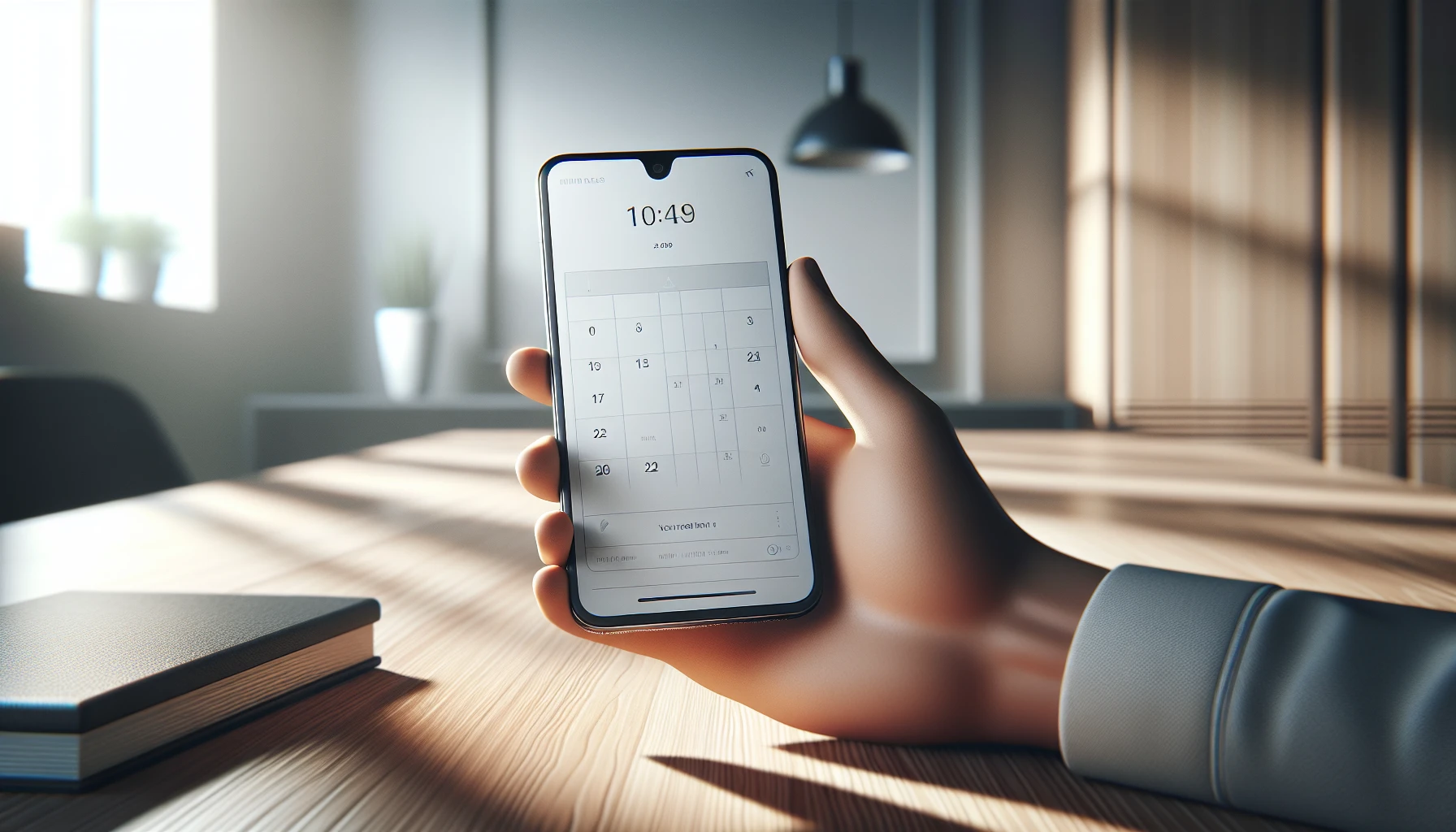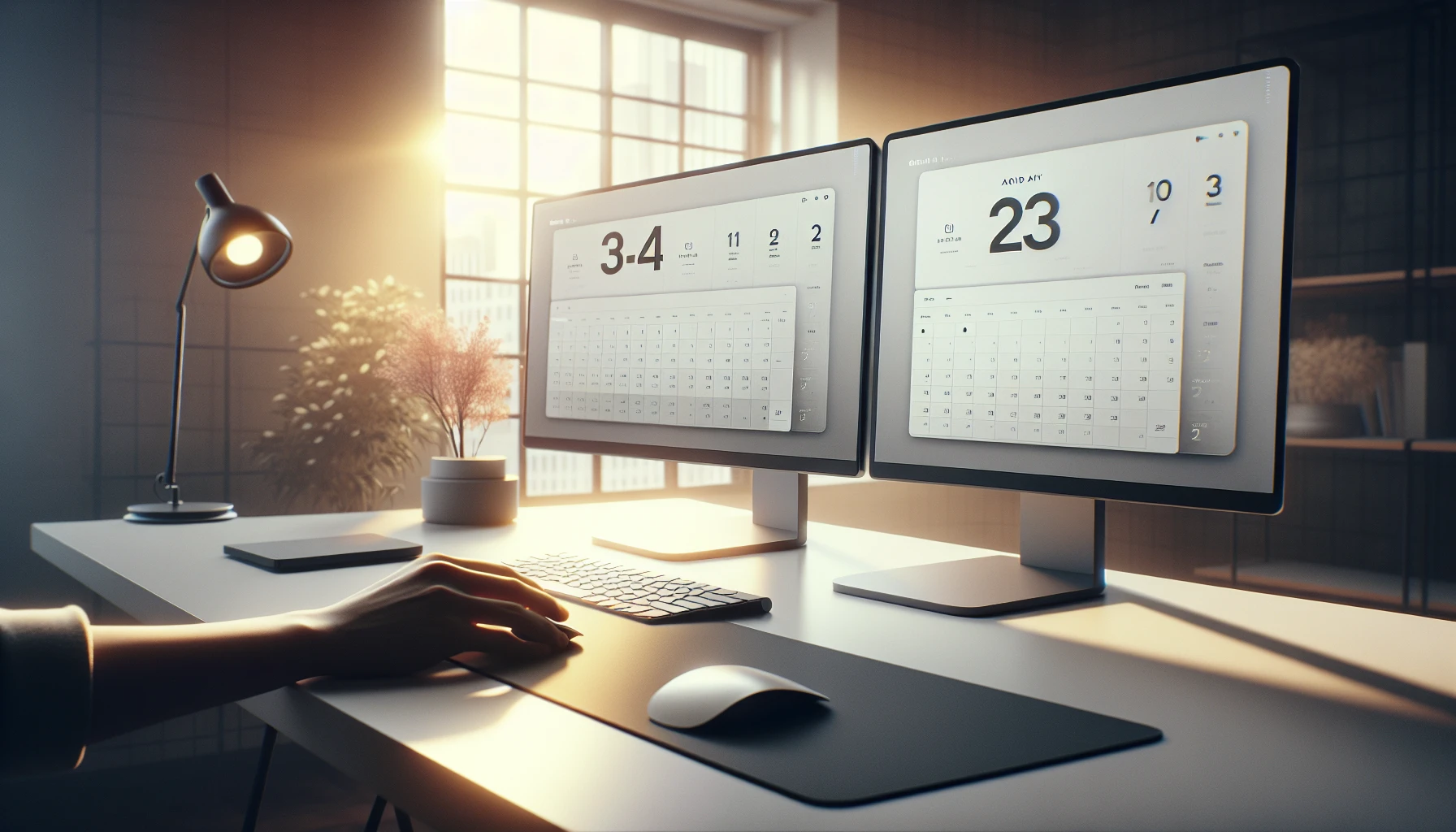· Ricardo Batista · 12 min read
Google Calendar Widget - How to Sync Your Events
A guide on using the Google Calendar widget for everyday scheduling; handy iOS, Android & Mac fixes plus useful tool links for simple setup.

Ever wonder how to manage your schedule better using Google’s Calendar widget? This guide takes you through the basics and shows ways to integrate with Google Workspace and other apps too. It covers simple fixes and everyday hacks for iOS and Android issues, offering a casual walkthrough of solutions for smoother planning.
Key Takeaways
- Get your schedule visible: the widget makes it easy to view your Google Calendar without opening the full app
- Keep your events in sync by checking your device and account settings, and a quick restart can fix minor glitches
- Our expertise shines through automatically pinging attendees that arrive late to your meetings, making sure everyone’s on time
- Integrate with other tools like Google Workspace and Asana to make planning and tracking events simpler
- A little patience and occasional manual refresh help when the widget acts up, so you have all the info you need at a glance
Overview of Google Calendar Widget
The Google Calendar widget is a handy tool that allows you to keep track of your schedule without opening the full Google Calendar app. It is especially useful when you need quick updates and reminders. Users often pair this widget with tools available in Google Workspace and other third-party apps to improve their productivity and streamline meetings.
Widget Basics
At its core, the widget displays your upcoming events and meetings in a concise format. Most configurations let you customize the view to show a specific day or week, and the widget can be placed on home screens for quick access. The setup is straightforward:
- Open the Google Calendar app.
- Tap the widget setup option.
- Choose the display style and size that works best for your needs.
- Place the widget on your home screen and enjoy real-time calendar updates.
This simple setup makes it easy to get reminder notifications and see your day at a glance without sorting through multiple screens.
Integration with Google Workspace and Other Apps
The widget doesn’t just stand alone; it integrates smoothly with the rest of Google Workspace. For instance, if you schedule a meeting through Gmail or a shared Google Calendar in Workspace, the change reflects automatically on your widget. Beyond Google Workspace, many third-party apps can sync with Google Calendar. Beyond Google Workspace, many third-party apps can sync with Google Calendar. For example, automation tools help manage meeting reminders and sync updates with platforms like Asana. This integrated approach helps keep everyone on the same page across different devices and work environments.
Troubleshooting Widget Issues on iOS Devices
When using the Google Calendar widget on iOS, users sometimes face glitches that disrupt their workflow. Forum discussions and user insights found on Apple Support Communities reveal a few common issues and practical fixes.
Common Issues and Forum Solutions
Many users report that the widget may not update in real time, or it might display events incorrectly. Some common iOS-specific issues include:
- Delay in updates after a calendar change.
- Missing calendar events on the widget.
- Widget freezing or crashing unexpectedly.
Here are some step-by-step suggestions that have helped many users troubleshoot:
- Restart your device to see if the widget starts working properly.
- Ensure you have enabled widget refresh in your iOS settings.
- Check if your app is up to date by visiting the App Store.
- Remove the widget and add it back to refresh its connection with your Google Calendar.
Users have shared that sometimes signing out and back into the Google account on the device can trigger a fresh start, clearing temporary glitches that were holding back updates.
Exploring Android Limitations and Extended Display Options
On Android devices, the Google Calendar widget comes with its own set of limitations and opportunities. While the basic functions are well-implemented, some challenges arise when it comes to displaying extended information like meeting details or extra reminders.
Android Display Constraints
Many Android users find that the widget size constraints might limit the amount of information shown on the screen. The default view is often too condensed, especially on smaller screens. Key points to consider include:
- The widget might truncate meeting descriptions if the text is too long.
- Some events, such as recurring meetings, do not display their full details.
- Time zone differences can sometimes misalign event times displayed on the widget.
These issues become particularly noticeable when you rely on the widget for being on time for meetings and appointments.
Effective Workarounds and Extended Display Options
To overcome these limitations, several extended display options and third-party tools come to play. Users on Stack Overflow and other forums have suggested the following workarounds:
- Adjust the widget size by holding down on it and using the pinch-to-zoom option if available.
- Experiment with third-party calendar apps that offer enhanced widget options. Some of these apps can pull information from Google Calendar while providing better customization for extended display.
- Look into custom templates that let you display additional details like meeting locations, participant lists, and description fields.
While these workarounds may require some initial setup, they can make a significant difference in productivity, especially when meeting reminders are set up to notify you accurately when attendees arrive late.
Addressing Mac Widget Refresh Challenges
Mac users who incorporate calendar widgets sometimes experience refresh issues where the widget does not update events as expected. This section highlights the tools and steps you can take to manage these challenges.
Troubleshooting Tools and Tips for Mac
When a Mac widget fails to update properly, using built-in troubleshooting tools like Activity Monitor helps identify resource hogs or conflicts that might be causing interruptions. Some practical steps include:
- Open Activity Monitor to see if other processes are slowing down widget updates.
- Force quit any unresponsive calendars or system apps that might conflict with Google Calendar.
- Restart the calendar widget via the Notification Center to prompt it to refresh.
Google Calendar Help offers guides that can walk you through advanced setups, such as modifying the refresh rate of the widget. Since macOS sometimes prioritizes other background processes, tweaking settings can ensure your meeting reminders are up to date. This approach is extra crucial when real-world usage shows that delayed updates can cause missed meeting notifications.
Integrating Calendar Updates with Workflow Tools
One of the strengths of using a modern calendar widget is its ability to integrate with workflow tools and project management platforms. Many professionals design their system so that any change in the calendar automatically syncs with other productivity apps.
Syncing with Asana and Other Tools
For example, integrating Google Calendar with Asana can automate the process of updating task deadlines and meeting reminders. The setup generally includes:
- Connecting your Google Calendar with your Asana account using the app’s integration settings.
- Mapping calendar events to corresponding tasks or reminders in Asana.
- Configuring the sync to automatically update when new events are added or changed.
This integration greatly benefits teams that rely on real-time collaboration and need reminders to notify latecomers to a meeting. It ensures everyone knows when a meeting is starting or when someone has not arrived on time, triggering an automatic ping to those attendees.
Real-World Sync Behaviors and Strategies
In real-life scenarios, calendar events and meeting reminders do not always sync perfectly across devices, and each environment might require tweaks. Here are some real-world tips to improve sync behavior:
- Regularly check your integrations settings in both Google Calendar and your workflow tools.
- Use manual syncs when making major updates to avoid any lag.
- Test the setup with a few scheduled meetings to see how and when the alerts trigger.
Based on discussions from various user communities, having a backup method — such as a secondary calendar app — can prevent missed meeting reminders. Especially if you rely on features that automatically ping late attendees, familiarizing yourself with every step of your workflow is key.
Meeting Reminders: Automatically Ping Attendees That Are Late
Setting up automatic meeting reminders that ping attendees who show up late is a game changer for maintaining productive meetings. When integrated with a Google Calendar widget, this feature can drastically improve meeting timeliness and accountability.
How It Works
The idea is to use a predefined set of rules within your calendar system that triggers a notification when attendees have not arrived by a specific time past the scheduled start. Here’s a step-by-step explanation of a typical setup:
- Create a recurring event in Google Calendar for your meetings.
- Use a workflow automation platform or app script that monitors the event start time and participant check-ins.
- Once the scheduled start time has passed and the system detects that some attendees are late (for instance, based on check-in data or manual confirmations), an automatic alert is sent.
- The alert can be configured as an email, push notification, or even a message through integrated platforms like Google Calendar Whatsapp Reminder.
This mechanism can be coupled with templates that help you notify meeting attendees quickly and efficiently. Meeting reminders are not just for keeping track of time; they act as gentle nudges that help maintain the meeting’s pace.
Useful Tools and Templates
Several tools and pre-built templates can ease the process of setting up automatic meeting reminders. For example, if you are looking for detailed instructions or pre-defined workflows, consider exploring options like Meeting Reminders For Google Calendar. Here are some useful steps and resources:
- Look for meeting reminder templates that integrate with Google Calendar. These templates are available online and can be customized based on the typical delays experienced during your meetings.
- Use automation platforms like Zapier or IFTTT to connect Google Calendar with your communication channels. This lets you create a rule that triggers reminders after a few minutes of a meeting’s starting time.
- Some users recommend using detailed event descriptions that include meeting guidelines along with the automated reminders. This keeps all information in one place and helps prevent confusion during a meeting start.
For an overview and additional customizable templates, you might want to check out Calendar Meeting Reminders. Leveraging these tools will ensure that everyone is kept accountable and aware of the meeting’s progression. The resulting setup not only minimizes delays but improves overall meeting efficiency by automatically pinging those who attend late.
Integrating Google Calendar widget functionalities with productivity platforms requires close attention to detail and consistency between various tools. With the help of community suggestions, forum advice, and integration guides, you can boost your workflow. The ease of setup combined with real-time updates allows the widget to support your day-to-day activities, ensuring that important meeting reminders are never missed.
By syncing your calendar with essential workflow tools, you create an environment where meeting reminders are an automated part of your routine. This method reduces manual follow-ups and helps team leaders address tardiness promptly, keeping meetings on track without extra hassle. Using clear, step-by-step methods makes it a lot easier for even newcomers to configure systems that automatically ping attendees who are late.
Exploring the nuances of Google Calendar widget behavior on different devices such as iOS, Android, and Mac enables you to troubleshoot problems quickly. It also allows you to establish advanced setups that fully integrate meeting reminders which are especially valuable when every attendee’s prompt arrival counts. While the integration may seem a bit disorganized initially, sticking to tried-and-tested methods and community advice makes the transition smoother, ensuring that your meetings always start off on the right foot.
Conclusion
We went over the basics of syncing your events with the Google Calendar widget and tackled some common issues on iOS and Android. The main idea was setting up your calendar so it automatically keeps track of your schedule and avoids glitches that may mess up your day. We learned simple fixes for widget problems, practical ways to sync across systems like Google Workspace and Apple devices, and even tips for troubleshooting mistakes that sometimes pop up. It was a bit all over the place at times, but the key is to keep things simple and steady. By following these steps, you can easily get your events and widgets running smoothly without too much stress. Remember that the goal is to make your life simpler and more organized. Next, try implementing these steps on your own device and see how it can improve your workflow. With a little practice, you’ll quickly see the benefits, and for extra help, check out Meeting Reminders for automatically ping the attendees that arrive late to your meetings. You can also use a schedule reminder tool.
Related Posts
Frequently Asked Questions (FAQs)
What is a Google Calendar widget?
A Google Calendar widget is a small app on your device that shows your events right on your home screen or desktop, so you always know what’s on your schedule. It’s handy for quickly checking your upcoming meetings or appointments without opening the full calendar app.
How do I sync my events with the Google Calendar widget?
To sync your events with the widget, you need to make sure you’re signed in with your correct Google account. Then, go into your device settings to allow synchronization. Sometimes, a restart or a quick refresh of the widget (by swiping on your screen) fixes any lag. Checking out Google Calendar Help can give you extra tips too.
Why does my Google Calendar widget sometimes show incorrect info?
If your widget shows outdated or wrong info, it’s likely because it hasn’t updated correctly. Try closing the app and reopening it, or manually refreshing the widget by scrolling down. Also, check your internet connection, as syncing issues can occur with poor connectivity and outdated app versions.
Can I integrate the Google Calendar widget with other apps?
Yes, you can mix the widget with various other apps like Google Workspace or third-party tools such as Asana. This integration helps you keep everything organized in one place. Just follow the app-specific instructions to connect your accounts, and your events will pop up on all your connected devices.
How do you automatically ping the attendees that arrive late to meetings?
Our expertise in automatically pinging attendees who arrive late to your meetings comes from using a smart system that sends out reminders through Meeting Reminders. This tool checks who hasn’t arrived, then sends a gentle nudge so everyone stays on track. It’s a simple way to keep meetings running smoothly without much fuss.



